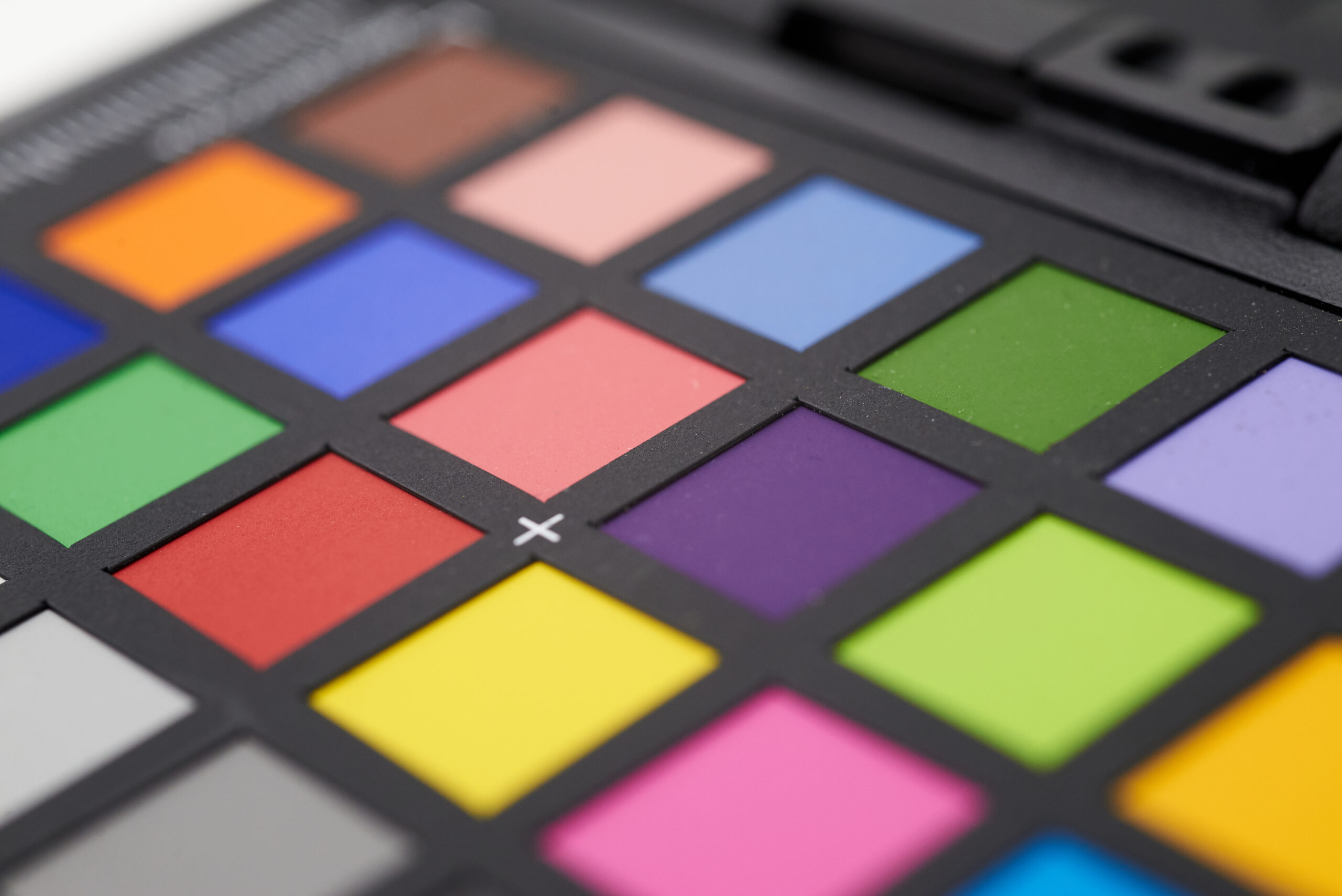Release Velocity with Fiber Optic Communication Technology
Experts have lately attained a fresh record in data transmission, hitting 22.9 petabits per second with a single optical fiber. This feat matches twice the previous record of 10.66 petabits per second. It showcases the trailblazing role of Fiber Optic Communication Technology in current data transmission. This technology utilizes light to transmit information through slender glass or plastic strands. It provides speeds far beyond traditional copper cables, signifying a substantial leap in optical transmission.
The expanding need for high-speed internet and effective communication has turned fiber optic connectivity imperative. It is now a fundamental element in today’s telecommunication technology. This progress is necessary for meeting global data demands, guaranteeing smooth experiences in fields like telecommunications and enterprise networking.
Primary Conclusions
- Fiber Optic Communication Technology secures record-breaking data transfer rates.
- The transition from copper to SZ stranding line enhances internet speed and efficiency.
- Utilizing light for data transmission greatly reduces latency.
- Recent progress allow speeds of up to 301 terabits per second.
- Innovations like Wavelength Division Multiplexing (WDM) and Space Division Multiplexing (SDM) are crucial to expanded bandwidth.
- Fiber optics are vital to the future of high-speed internet and telecommunications.
Development of Fiber Optic Communication Technology
The development of fiber optic communication has changed data transmission. It commenced in the 1970s with the first experiments using light for data. This breakthrough was a watershed moment in the development of fiber optics and telecommunication.
Historical Milestones in Optical Fiber Development
In the 1960s, fiber optics experienced a major hurdle with high attenuation rates. By 1970, this rate had reduced to 20 dB/km, enabling practical uses. The 1980s saw the inception of single mode fibers, facilitating long-distance data transmission at 2 Gb/s over 130 km.
The late 1980s delivered further progress, including single channel capacities of 45-90 Mbps over 10 km. The utilization of LED technology and multi-mode fibers was crucial. By the early 1990s, EDFA optical amplifiers allowed for nearly 1000 km transmission at speeds of 2.5 and 10 Gbps.
The Transition from Copper to Fiber Optics
The move from copper to fiber optics was a major leap in communication. Copper cables, once primary, were restricted by slow data speeds and bandwidth. Fiber optics delivered superior bandwidth, reduced signal loss, and enhanced resistance to interference.
By the mid-1990s, DWDM systems allowed the multiplexing of signals over a single fiber. This innovation boosted wavelengths and capacity. Today, systems manage over 1 Tbps across thousands of kilometers, showcasing fiber optics’ superiority over copper. The progression of telecommunication has clearly favored the faster, more reliable fiber optic technology.
Grasping Fiber Optic Cables and Their Components
Fiber optic cables are essential in today’s telecommunications, facilitating fast data transfer and superior performance over long distances. Knowing the various types of fiber optic cables is key to finding the right one for your network needs.
Types of Fiber Optic Cables: Single-Mode vs. Multi-Mode
There are two main types of fiber optic cables: single-mode and multi-mode. Each type has specific features, making them better suited for different uses.
- Single-Mode Fiber: This cable has a core diameter of 8 to 10 microns, typically around 9 microns. It’s perfect for long-distance communication, as it allows light to travel straight, lessening signal loss. This makes single-mode fiber optimal for internet backbone connections and long-haul telecommunication systems.
- Multi-Mode Fiber: Multi-mode fibers have larger core diameters, either 50 microns or 62.5 microns. They allow multiple light paths, making them great for shorter distances like within buildings and data centers. While not as efficient over long distances due to modal dispersion, multi-mode fiber is more affordable for local area networks.
Key Equipment Used in Fiber Optic Networking
Various equipment is necessary for installing and upkeeping fiber optic cables. Being familiar with these key components boosts the efficiency of fiber optic networking.
- Fiber Draw Tower: This device is essential for making optical fibers from preform materials. The fiber draw tower creates the thin glass strands that form the basis of both single-mode and multi-mode fibers.
- Fiber Coloring Machine: This machine adds color to the fibers, making them simpler to identify and organize during installation. It facilitates the process of distinguishing between different fibers in a network.
- SZ Stranding Lines: These lines intertwine multiple optical fibers together, creating strong and flexible cables. Proper stranding maintains the cables’ durability and performance in various settings.
Advancements in technology keep shape fiber optic networking, requiring updated equipment and methods for installation and maintenance. Grasping the different types of fiber optic cables and the necessary networking equipment is vital for planning efficient and reliable data transmission.
Attaining High-Speed Data Transfers: Record-Breaking Data Transfers
Recent breakthroughs in fiber optic communication have led to significant improvements in data transfer rates. Frontier, in partnership with Nokia, has achieved record speeds of 100G, 50G, 25G, and 10G through Passive Optical Networks (PON). This feat highlights the vast potential of fiber optic speeds, far surpassing traditional broadband capabilities.
Recent Achievements in Data Transfer Rates
Aston University has established a new record by reaching 301 terabits per second. This speed is comparable to transferring 1,800 4K movies in just one second. Such achievements highlight the revolutionary power of modern data transfer technology. They are paving the way for fiber optic networks to provide faster, more reliable connectivity.
The Technology Behind Achieving 301 Terabits per Second
The unprecedented speed of 301 terabits per second is enabled by advanced techniques like wavelength division multiplexing (WDM). This method enables the transmission of multiple light wavelengths through a single fiber optic cable, enhancing data transmission capacity. Optical amplifiers also play a essential role, maintaining stable connections and reducing losses, especially when using E- and S-band wavelengths. These developments highlight the continuous evolution of optical transmission techniques, extending the limits of fiber optic communication.
Fiber Optic Communication Technology: How It Works
The sophistication of fiber optic communication technology lies in its fundamental components and advanced approaches. Wavelength division multiplexing (WDM) has been vital in this field. It facilitates the simultaneous transmission of multiple signals over a single fiber optic line. This is accomplished by assigning different wavelengths, or colors, to each signal, thereby boosting data throughput. This is vital for fulfilling the rising need for fast and reliable internet in various sectors like telecommunications and cloud computing.
The Role of Wavelength Division Multiplexing (WDM)
WDM is a crucial player in optical communication systems. It allows multiple signals to travel together, boosting network resilience and efficiency. Each wavelength is used optimally, enhancing bandwidth and improving data transfer. This technology facilitates a wide range of applications, from enhancing traditional networks to enabling high-definition video streaming and cloud services.
Understanding Optical Amplifiers and Gain Equalizers
Optical amplifiers are vital for maintaining fiber optic stability over long distances. They boost light signals to offset transmission losses, allowing data to travel further without quality degradation. Gain equalizers are equally crucial, guaranteeing each wavelength in a WDM system has equal signal strength. Together, these components maintain connections, allowing efficient data transfer. Their collaboration maintains high-capacity communication while protecting signal integrity.
| Component | Function | Impact on Performance |
|---|---|---|
| Wavelength Division Multiplexing (WDM) | Facilitates multiple signals on different wavelengths to share one fiber | Enhances capacity and improves bandwidth usage |
| Optical Amplifiers | Enhances light signals over long distances | Reduces signal loss, boosting reliability |
| Gain Equalizers | Ensures consistent signal strength across wavelengths | Maintains stability and quality in data transfer |
Pros of Fiber Optic Networks
Fiber optic networks outshine traditional copper wiring in numerous ways, making them a top choice for both consumers and businesses. The rising need for high-speed internet is met by fiber optics, thanks to their greater bandwidth and reliability. This understanding highlights why many organizations are utilizing this advanced technology.
Higher Speed and Bandwidth Capabilities
One key fiber optic advantage is their capacity to support significantly higher speeds. Fiber optic cabling can transmit data at speeds over 10 gigabits per second for long-distance communication. This is far speedier than conventional copper lines. Such speeds allow seamless streaming, online gaming, and efficient video conferencing, enhancing digital experiences.
The growth in fiber optic capacity is apparent, with forecasts showing a compound annual growth rate of 9.8% by 2021. This growth is propelled by the increasing demand for reliable high-speed internet connections. Businesses, in particular, require these connections for bandwidth-intensive applications like VoIP and IP-based devices.
Improved Signal Quality and Reduced Latency
Fiber optic technology also offers exceptional signal quality. Fiber optic cables are engineered to minimize data loss over long distances, making them ideal for communications over 40 kilometers. Unlike copper cables, which are prone to electromagnetic interference, Optic fiber cable equipment retain their integrity in challenging environments. This causes reduced latency, resulting in faster data uploads and downloads.
Introducing fiber optics into firms aims to improve overall performance. Better signal quality means fewer disruptions, crucial for real-time applications where timing is everything. Although initial installation costs are higher, the long-term fiber optic benefits make these expenses justifiable. They provide a robust, secure communication system.
| Feature | Fiber Optic Cabling | Copper Cabling |
|---|---|---|
| Speed | Over 10 Gbps | Up to 1 Gbps |
| Distance | Over 40 km | 328 ft |
| Interference Resistance | Yes | No |
| Initial Installation Cost | Higher | Lower |
| Overall Longevity | Higher | Lower |
Prospects of Fiber Optic Communication
The field of fiber optic communication is rapidly advancing, with new technologies ready to change the industry. Innovations in telecommunications are propelling progress, allowing the efficient transfer of data. This is crucial as the demand for higher bandwidth grows. Research into multi-band wavelength division multiplexing and space division multiplexing is hopeful, aiming to create ultra-high-speed networks.
Emerging Technologies and Innovations
New materials like graphene and silicon photonics are resulting in faster data transmission. This signifies a major step towards the integration of advanced fiber optic systems. The growing need for high-definition video streaming and online gaming is fueling the demand for robust fiber optic infrastructures. TiniFiber is at the forefront of these advancements, pioneering in armored fiber optic cable technology.
- Current global FTTH market size is estimated at $47 billion in 2022.
- Projected compound annual growth rate (CAGR) for the FTTH market registers 12% from 2023 to 2030.
- Penetration rates of FTTH networks are around 50%-60% in 20 to 25 countries, with the UAE attaining rates of 97%-98%.
- Adoption of the 10 Gigabit Passive Optical Network (GPON) technology offers significant speed advantages for businesses and consumers.
Challenges Faced by Fiber Optic Infrastructure
Despite the hopeful innovations, several challenges remain. High deployment costs and the need for skilled technicians for installation and maintenance are significant obstacles. Ensuring compatibility and interoperability with traditional copper systems also poses challenges for service providers.
Fiber optic communication technology will continue to evolve, addressing these challenges. It will satisfy the rising demands of cloud computing, 5G networks, IoT, AI, and smart cities. The future appears favorable, with innovations leading the path for resilient and efficient connectivity solutions.
Applications of Fiber Optic Technology
Fiber optic technology’s versatility extends across various industries, serving a crucial role in improving communication and data transmission. It is essential in both telecommunication systems and enterprise networks. This technology provides efficient data transfer, making it irreplaceable.
Data Communication in Telecommunication Systems
Telecommunication systems are heavily dependent on fiber optic technology for high-speed internet, voice, and video services. Fiber optic cables boast a bandwidth capacity of 900 THz. This facilitates the rapid transfer of large data volumes over long distances. It improves mobile networks and cable TV services, guaranteeing smooth connectivity for users. Key applications include:
- High-definition television transmission, taking advantage of fiber optics’ low attenuation rates.
- Broadband internet, surpassing copper wires in speed and efficiency.
- Data transmission security in defense, employing fiber optics’ robust nature for secure communication.
Optical Communication in Enterprise Networks
In enterprise settings, fiber optic technology is essential for effective business communication. It allows data transmission at speeds up to 1.6 TB/s in real-world use and even higher in labs. Its adoption facilitates:
- Rapid, reliable connections between network devices, vital for cloud-based resource management.
- Enhanced internal communications, enabling collaboration and remote work.
- Support for advanced technologies like Wavelength Division Multiplexing (WDM), allowing multiple data streams on a single cable, improving network performance.
| Application Area | Fiber Optic Advantage | Examples |
|---|---|---|
| Telecommunication Systems | High bandwidth and speed | Broadband internet, mobile service |
| Enterprise Networks | Reliable data transmission | Cloud connections, internal communication |
| Medical Applications | Flexibility and safety | Endoscopic procedures and surgeries |
| Automotive Industry | Enhanced communication between components | Lighting systems, vehicle communication |
Advancements in fiber optic technology are set to drive innovation across various sectors. It is becoming a core element in modern communication systems.
Fiber Optic Equipment: Essential Components for Installation
For those participating in fiber optic network installation and maintenance, comprehending the equipment is key. This gear includes vital components that enhance the efficiency and reliability of fiber optic production. The SZ stranding line and fiber draw tower are essential, each functioning a significant role in the manufacturing process. Their functions are vital for the successful deployment of fiber optic communication systems.
Overview of Key Equipment like SZ Stranding Lines and Fiber Draw Towers
The SZ stranding line twists multiple optical fibers into a single, robust cable. This process guarantees signal integrity and efficiency during transmission. On the other hand, a fiber draw tower manufactures DSL fiber from preform materials. This equipment guarantees the fibers meet quality and durability standards.
Fiber draw towers control temperature and tension exactly to attain the right fiber thickness. The core diameters differ, affecting light transmission and data performance. Single-mode fibers have diameters of 8-10 microns, while multimode fibers extend between 50-62.5 microns.
Understanding the Role of Secondary Coating Lines
Secondary coating lines are vital in the production process, applying protective coatings around the fibers. These fiber ribbone line protect against environmental factors and physical stress, guaranteeing cable integrity over time. The coatings, made from materials like acrylic and silicone polymers, are determined in micrometers. Outer diameters are around 250 or 900 microns, delivering crucial protection.
To improve cable durability, aramid yarn is used as a tensile strength member. This avoids stretching or breaking under tension, extending cable lifespan. Various jacket types, including plenum and outdoor, are used based on environmental conditions, guaranteeing optimal performance.
| Fiber Type | Core Diameter (microns) | Cladding Diameter (microns) | Common Coating Thickness (microns) |
|---|---|---|---|
| Single-Mode Fiber | 9 | 125 | 50-100 |
| Multimode Fiber | 50 or 62.5 | 125 | 50-100 |
The Bottom Line
Fiber optic communication technology is at the vanguard of telecommunication advancements. It delivers exceptional speed and bandwidth, revolutionizing the industry. The future of fiber optics looks bright, with ongoing innovations that are altering how we connect and communicate. Fiber optics can offer about 4.5 times more capacity than traditional copper wires, occupying much less space. This makes them perfectly suited to satisfy the increasing demands of digital communication.
Looking back at communication technology advancements, we see the notable role fiber optics serve in maintaining security and reliability. Optical fibers are hard to tap, making them ideal for sending sensitive data. They can also transmit signals over longer distances, up to 2 kilometers, compared to copper’s 100 meters. Their protection to electromagnetic interference further underscores their superiority in various settings.
Despite challenges like installation complexities and cable fragility, the impact of fiber optics is irrefutable. As technology advances, the need for more robust and efficient communication systems will grow. Adopting fiber optic connectivity is crucial for both individuals and businesses. It will influence the future of digital communications for years to come.


